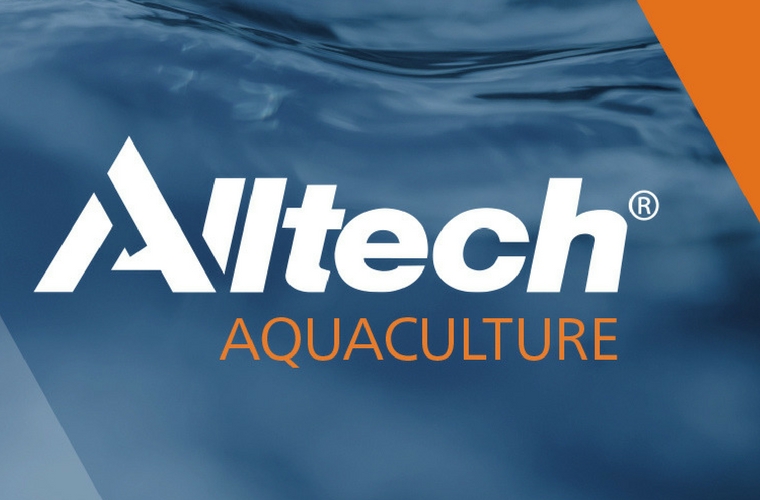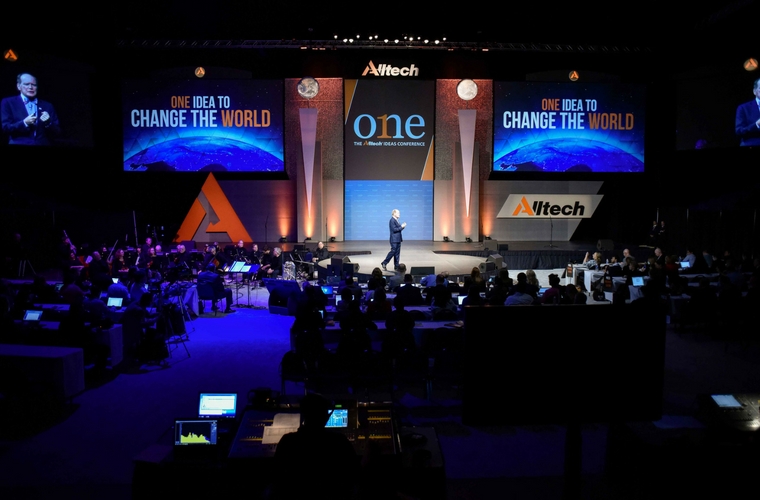An Interview with Becky Timmons
The following is an edited transcript of our interview with Becky Timmons, director of applications research and quality assurance at Alltech.
To listen to our entire conversation with Becky, click on the player.
Here at ONE 2016, you are presenting on the fish oil dilemma. Why exactly is fish oil important?
Fish oil is a very important part of the food chain. If you look at our growing population needing more and more protein to feed the people, aquaculture, which is farmed fish, has finally surpassed the amount of wild capture. With overfishing, we cannot catch enough fish in the sea. We are having to farm, and fish oil is part of that diet to produce farmed fish.
Why is fish oil important to humans, how do we get fish oil and what does it contribute to human nutrition?
If you think about it, we are all told to eat one to two servings of fish a week and with one serving of that being a fatty fish. The reason for that is the DHA omega-3 portion of that fat, which is very important to our heart health, eye health and brain health. If you think a little further with prenatal vitamins and infant formula, those all have DHA incorporated into them now because it’s so important for brain and eye development of children.
Because we have a shortage of fish oil, what are producers doing to make up for that shortage?
About 1 million tons of fish oil is all that’s available every year, and that fluctuates a little bit depending on weather conditions and fishing conditions, etc., but the maximum is a million, and, as consumers, we are using every bit of that. Most of it is going for fish farming, but a growing segment is going for direct human nutrition (e.g., the fish oil capsules you take). As more and more of that is going to human nutrition, there is less available to produce farmed fishing.
Farmed fish is a growing segment; what are they going to do? They have started to replace fish oil and fish meal with things like vegetable proteins, soymeal, soybean meal and soy oil. What that causes is that omega-3 that’s so important to go down in the fish that you’re eating. Now they are starting to say: Instead of that one to two servings per week, that’s going to double to two to four servings per week. That’s a lot of fish.
Sitting down to that salmon dinner no longer has the same value it once did. You have to eat a few more of those a week.
That is correct. There have actually been studies done. In Scotland, they pulled about 3,000 salmon and did studies on that to look and see — what are the levels? — and it has gone down significantly.
What can be done? Are there any alternatives for producers?
Yes, that’s what Alltech is working on. We have an algae that we produce that is a high-fat, high-DHA algae. If you think about it, fish do not naturally produce DHA omega-3. They get it in their food chain; they get it from algae. We are just bypassing the fish and taking that same algae, producing it so that we then have a nice high-fat, high-DHA algae to feed to the fish.
Does it matter how the algae are produced?
It does. In our case, we are producing this (algae) in very large enclosed vessels. With that, we can control everything — the temperature, the time, the pH, the mixing speed, all of those things that give us very high efficiency, which is good, but also we control the nutrients that we feed it. What that means is, something you hear about with fish and fish oil is that mercury and dioxins can be a problem; we don’t have to worry about that since we are controlling everything going into the system.
Algae are not just for aquaculture diets; we see applications for other production species, right?
That’s correct. If you think about it — back in history, how we used to feed our animals — we would feed scraps to our pigs and chickens out back. They would naturally have things like that fish oil in the food chain, and therefore it was found naturally in the meat, milk and eggs we would eat. We don’t do that anymore, so now they are fed very heavily on things like soy, corn and distillers grains. What we have found is that if we put in algae, the high-DHA, in any livestock diets, the animal benefits. It is beneficial to their health status as well as it incorporates back naturally into the meat, milk and eggs for human nutrition.
I’m sure kids are sometimes more likely to eat some scrambled eggs than a plate of salmon.
That is very interesting because, like I said, DHA is something that’s added to prenatal vitamins as well as infant formula, but once a child reaches about 1 year old, where are they getting DHA? They are not munching on salmon or trout. A study showed that in the U.S., the recommended daily intake for a 3-year-old would be 150 milligrams a day. The average American child at 3 years old is getting 19 milligrams per day. That’s a huge discrepancy, and, as you have said, a child is more willing to eat eggs or naturally enriched chicken fingers or hamburger, something like that, that will have the DHA omega-3 in it.
There is an incredible opportunity for food companies to specialize and differentiate themselves on the market with these functional foods. What is the availability of algae?
Again, when we say algae, algae is a huge category with lots of different types of algae. We’re talking about one specific type that we are producing. We have been working really hard over the last five years, increasing our efficiencies, lowering our costs and increasing our scale so we can produce more and more to be able to fill that gap.
Would you consider it to be economical for a producer to incorporate algae in their animals’ diets?
Absolutely.
How does that work in the animal diet? Can you describe how algae would be added to feed?
Our product is a dry powder, so it can be added just like any other feed ingredient. It can be mixed into the meal, and then it can be pelleted, extruded if it were going into a pet food. It can be handled just like any other raw material.
The animals enjoy it?
Yes, the animals enjoy it.
Lastly, you referenced that algae are very diverse organisms. It also brings to mind what we hear about soil and how much of soil is yet to be discovered. Are there some similarities there, and what else is there for us to discover in algae?
In soil, you would find hundreds of microorganisms in each gram of soil, even thousands. A lot of those are undiscovered, so now they are starting to find the benefits of soil, the same thing is true with algae. In the ocean and depths of the ocean, there are believed to be several hundred thousand species of algae, and each one is different. You can imagine the untapped resources out there.



















